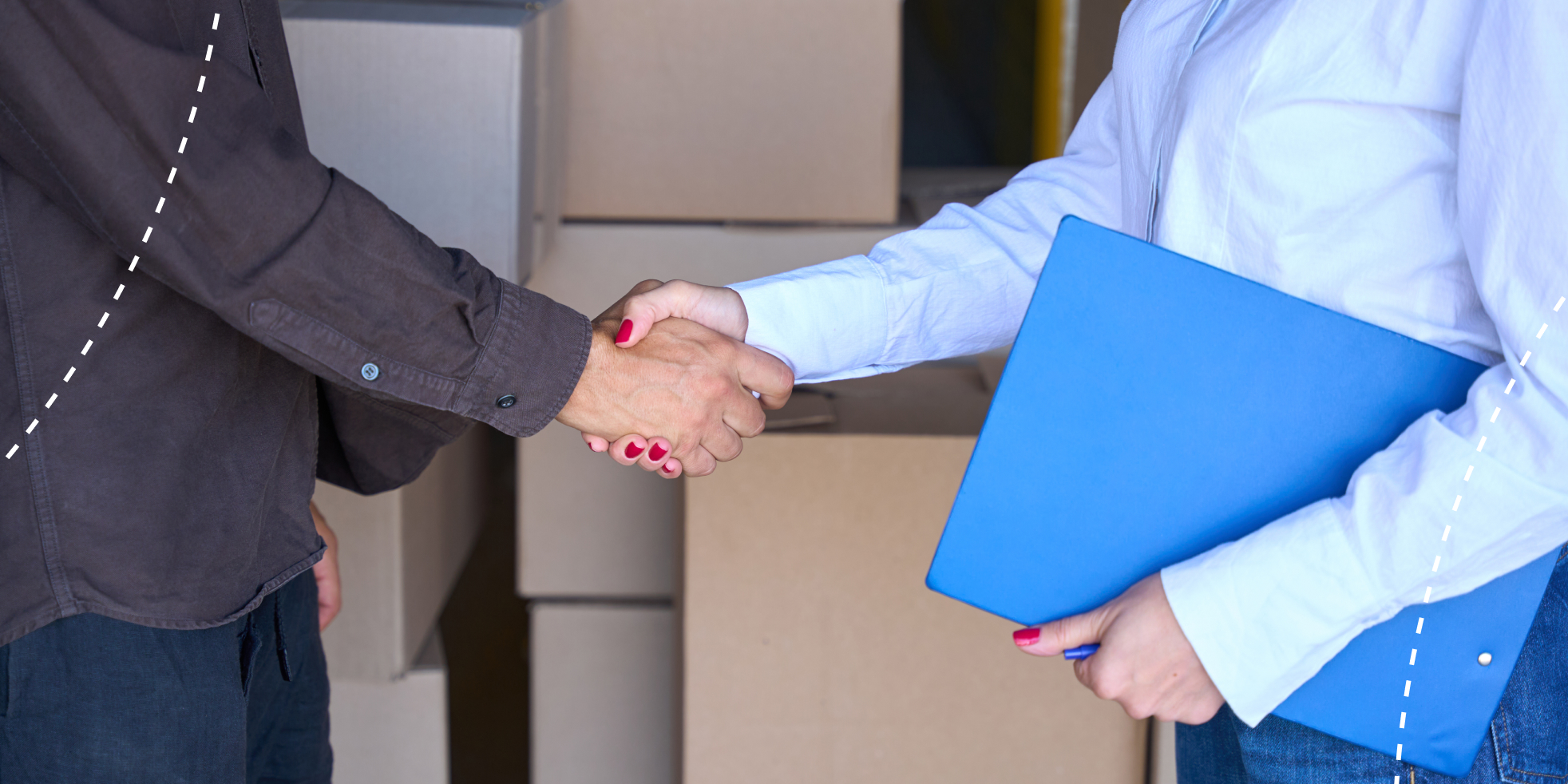The Ultimate Guide to Choosing The Best Reverse Logistics Solution

In today’s fast-paced retail environment, where customer expectations are constantly evolving and more demanding, partnering with a reverse logistics solution is no longer optional — it’s essential. Businesses cannot afford to continue sitting on the sidelines when optimizing the returns management and reverse logistics processes, whether B2B or B2C.
Although reverse logistics services are absolutely essential, choosing the right provider can be more complex than many businesses bargained for. This guide seeks to clarify just that, helping you identify and choose the best reverse logistics platform for your business.
1. Scalability of the Reverse Logistics Software
Anticipating demand growth across every product SKU is natural. However, a side effect of that is more returns. As sales and customers increase, more orders will inevitably be returned. Therefore, when choosing a reverse logistics solution, choose one the business can rely on and scale with. When assessing the solution’s scalability, it is vital to consider factors like peak seasons, product launches, and future expansion plans.
This way, you are not constantly changing reverse logistics solutions whenever the business grows beyond a certain point. The solution should be able to handle current levels of operations and scale up its processing as the business grows. It is important to note that some of these solutions also have features that can be unlocked whenever the business reaches a certain level of returns operation. Scalable reverse logistics solutions eliminate fear of growth because you have a system that can handle it.
2. Ability to Integrate With Existing Systems
Your business and its supply chain will probably have existing systems that allow operators to run the process effectively. These systems may include a Warehouse Management System (WMS), a Transport Management System (TMS), and an Enterprise Resource Planning (ERP) solution. While they all aim to improve supply chain efficiency, they do so across different nodes in the process and are rarely from the same solution provider.
This means you want a system that seamlessly integrates with them, allowing business operations such as e-commerce platforms, last-mile delivery, and inventory management to continue operating without difficulty. To find this, explore reverse logistics solutions with robust API integration capabilities. Reverse logistics solutions pre-built with popular platforms can also be quite helpful.
3. Automative Ability of The Solution
One vital pillar for a successful reverse logistics process is automation. This is especially true considering that leveraging manual labor and manual data entry exposes the business to various errors, which can have devastating financial and reputational impacts. You want a reverse logistics application that can flawlessly automate reverse logistics and return management operations tasks.
These tasks include return authorization, label generation, tracking, sorting, inventory management, and refund processing. Beyond avoiding errors, automation also speeds up the entire process, ensuring businesses can manage more returns with the same resources and at the same time.
4. Data Analytics Capabilities
Data is another essential pillar to consider when optimizing the reverse logistics process because it allows your business to design the entire process based on what will benefit the customers or what they want. It is an effective way to gain loyalty and repeat purchases.
Choose a reverse logistics application that can collect these data seamlessly and then analyze them to provide valuable insights for the business. The solution should provide detailed analytics on return reasons, product performance, and customer feedback. With that information, your business can help you identify trends, improve product quality, and reduce return rates.
5. Can It Enhance Customer Experience?
Customers are keen on having a positive return experience whenever they engage with a retailer, whether an e-commerce brand or a fast food chain. Customer experience is critical as it is ‘expected’ of a brand today. Brands that were found lacking in customer experience have all seen a dent in sales.
Typically in the retail world, customers want a fast return process that ensures they can access their refunds as soon as possible. Zero errors will also be great. That means when choosing a reverse logistics solution, choose one that can help you enhance the entire customer process.
For instance, the ReverseLogix platform includes a customer portal that streamlines information, automates processes, and facilitates communication between the business and customers.
6. Cost Effectiveness of The Solution
Price plays a critical role when choosing a reverse logistics management solution because it can impact the profitability of the entire operation. It is important to evaluate the structure of different solutions before settling for one that aligns with your budget. That said, while the price is crucial, it must not be the only criterion for choosing a solutions provider.
It is not advisable to opt for the cheapest option. Rather, the priority should be to find the solution that suits the business’s reverse logistics operation. This way, your business gets a better ROI. When considering price, it’s essential to factor in setup fees, transaction fees, and potential cost savings from reduced returns and enhanced reverse logistics efficiency. This includes offsetting any ‘extra’ transportation costs and evaluating the financial benefits of a more efficient returns process.
7. Customization of The Reverse Logistics Process
Reverse logistics solutions are neutral by design, but they are adjustable to the business or reverse operations of the supply chain. However, businesses and industries might be beyond the scope of many solutions in the market, so ensuring that the application can be customized to suit current and future business needs is essential.
The following will be important: customizable workflows, return policies, and branding options because they help your business stand out and allow for tweaking and optimization when necessary. Ultimately, a customizable solution allows the business to manage the reverse logistics process in a way that will ensure its success and seamless harmony with other processes in the supply chain.
8. Global Reach
For internationally operated businesses, partnering with a solution that checks all the checklists mentioned above will be great unless that solution has no international presence. It will limit the solution’s impact on the business’s reverse logistics operations and, in most cases, force the business to adapt or integrate other solutions for its international operations.
That is counterproductive and will only lead to more spending. Having multiple solutions can also limit productivity and impact the team’s ability to manage the returns process effectively. The best solution here is to integrate a reverse logistics solution that has a global reach and can enhance the operations in every country the business has a presence in. This way, there is much more uniformity.
A great example is the Samsonite and ReverseLogix partnership, which sees both companies managing returns operations worldwide.
9. Training and Support
A great application should also have a great support and training solution to help the team understand and operate seamlessly. Support structures also ensure that the application company is always on standby in case something goes wrong or there is an issue with operating the software.
Such problems have been known to cause massive crises for supply chains, leading to customer loss and reputational damage. Always ensure adequate training and support. It will significantly boost confidence in the product, ensure seamless operations, and optimize reverse logistics operations.
Why You Should Use ReverseLogix
We’ve solved the puzzle of complex product returns. This is why ReverseLogix is the only end-to-end return management system that lets you initiate returns, configure return processing, and even handle repairs. Our solution is trusted by clients across the world, and we have delivered outstanding results for companies like DHL, FedEx, Samsonite, Electrolux, and Jabra. That means we can deliver for you, too. Schedule a demo and see what we can do.
Frequently Asked Questions
Reverse supply chain refers to the process of moving goods from their final destination back to the manufacturer or distributor for returns, repairs, recycling, or disposal. It is important for businesses because it helps manage returns efficiently, enhances customer satisfaction, and can lead to cost savings and better resource utilization.
An optimized reverse logistics process enhances customer satisfaction because it streamlines the return process, reduces errors, speeds up refunds, and ensures clear communication throughout. Features like automated return labels and a customer portal can make the experience hassle-free and efficient for customers. When an optimized reverse logistics process is in play, both the customer and the business can save money effectively.
Key features include a fast and seamless return process, automated return labels, tracking capabilities, a user-friendly customer portal, and clear communication throughout the return process. These features ensure customers have a positive experience, which can increase their likelihood of making future purchases.
